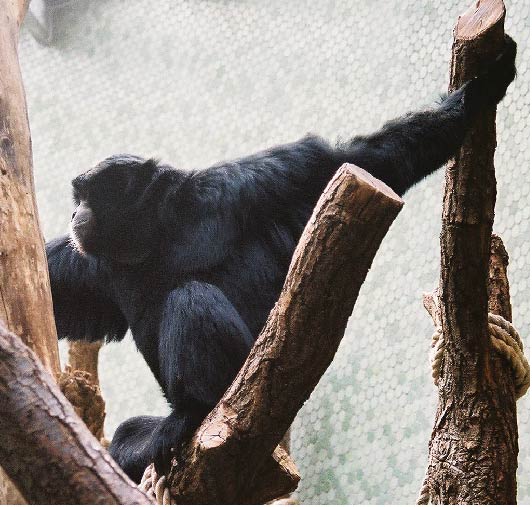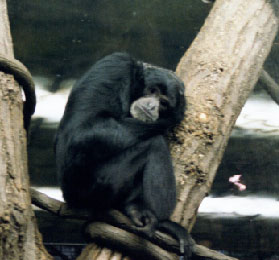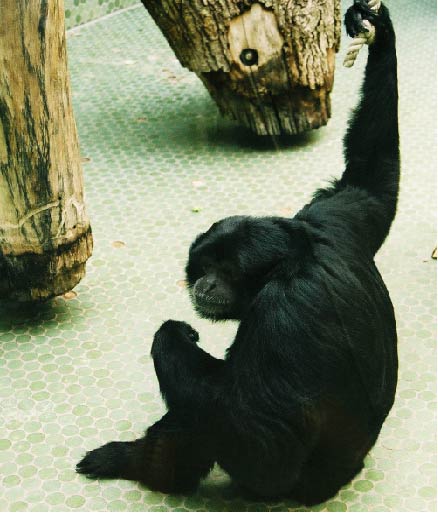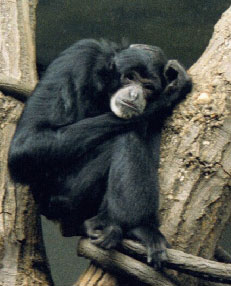This species has relatively long forearms which assist it in suspensory behavior. This species has throat sac located beneath the chin to help enhance the calls. The siamang lacks a tail, caudal vertebrae. The average body mass for an adult male siamang is around 10.9 kilograms, and for the female it is around 10.6 kilograms (Fleagle, 1988). The pelage color for both sexes is black. The throat sac has a pinkish or gray color to it.
RANGE:
The siamang is found in the countries of Indonesia and Malaysia. This species is found in semievergreen forests and tropical evergreen forests, and these are either of primary or secondary forest types.



